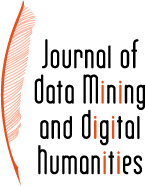 |
Régis Schlagdenhauffen - Transcription assistée par reconnaissance optique avec Transkribus : L’expérience du journal intime d’Eugène Wilhelm (1885-1951)
jdmdh:6249 - Journal of Data Mining & Digital Humanities, 28 août 2020, Atelier Digit\_Hum - https://doi.org/10.46298/jdmdh.6249- 1 Institut de Recherche Interdisciplinaire sur les enjeux Sociaux - sciences sociales, politique, santé
[en]
This article proposes use the Transkribus software to report on a "user experiment" in a French-speaking context. It is based on the semi-automated transcription project using the diary of the jurist Eugène Wilhelm (1866-1951). This diary presents two main challenges. The first is related to the time covered by the writing process-66 years. This leads to variations in the form of the writing, which becomes increasingly "unreadable" with time. The second challenge is related to the concomitant use of two alphabets: Roman for everyday text and Greek for private issues. After presenting the project and the specificities related to the use of the tool, the experiment presented in this contribution is structured around two aspects. Firstly, I will summarise the main obstacles encountered and the solutions provided to overcome them. Secondly, I will come back to the collaborative transcription experiment carried out with students in the classroom, presenting the difficulties observed and the solutions found to overcome them. In conclusion, I will propose an assessment of the use of this Human Text Recognition software in a French-speaking context and in a teaching situation.
[fr]
Cet article propose de restituer une « expérience utilisateur » du logiciel Transkribus en contexte francophone. Il s’appuie sur le projet de transcription semi-automatisée du journal intime du juriste Eugène Wilhelm (1866-1951). Ce journal comporte deux défis principaux : le premier est lié à la durée de la rédaction, 66 années, qui engendre des variations dans la forme de l’écriture, cette dernière devenant de plus en plus « illisible » le temps passant. Le second défi est lié à l’emploi concomitant de deux alphabets ; romain pour tout ce qui relève du quotidien et grec pour le for privé.L’expérience utilisateur restituée dans cette contribution s’articule autour de deux aspects. Dans un premier temps, après avoir présenté le projet et les spécificités liées à l’usage de l’outil, les principaux obstacles rencontrés et les solutions apportées pour y remédier seront synthétisés. Puis, je reviendrai sur l’expérience collaborative de transcription conduite avec des étudiants en salle de cours en présentant les difficultés observées et les solutions trouvées pour y remédier. En conclusion, je proposerai un bilan relatif à l’utilisation de ce logiciel d’HTR (Human Text Recognition) en contexte francophone et en situation d’enseignement
